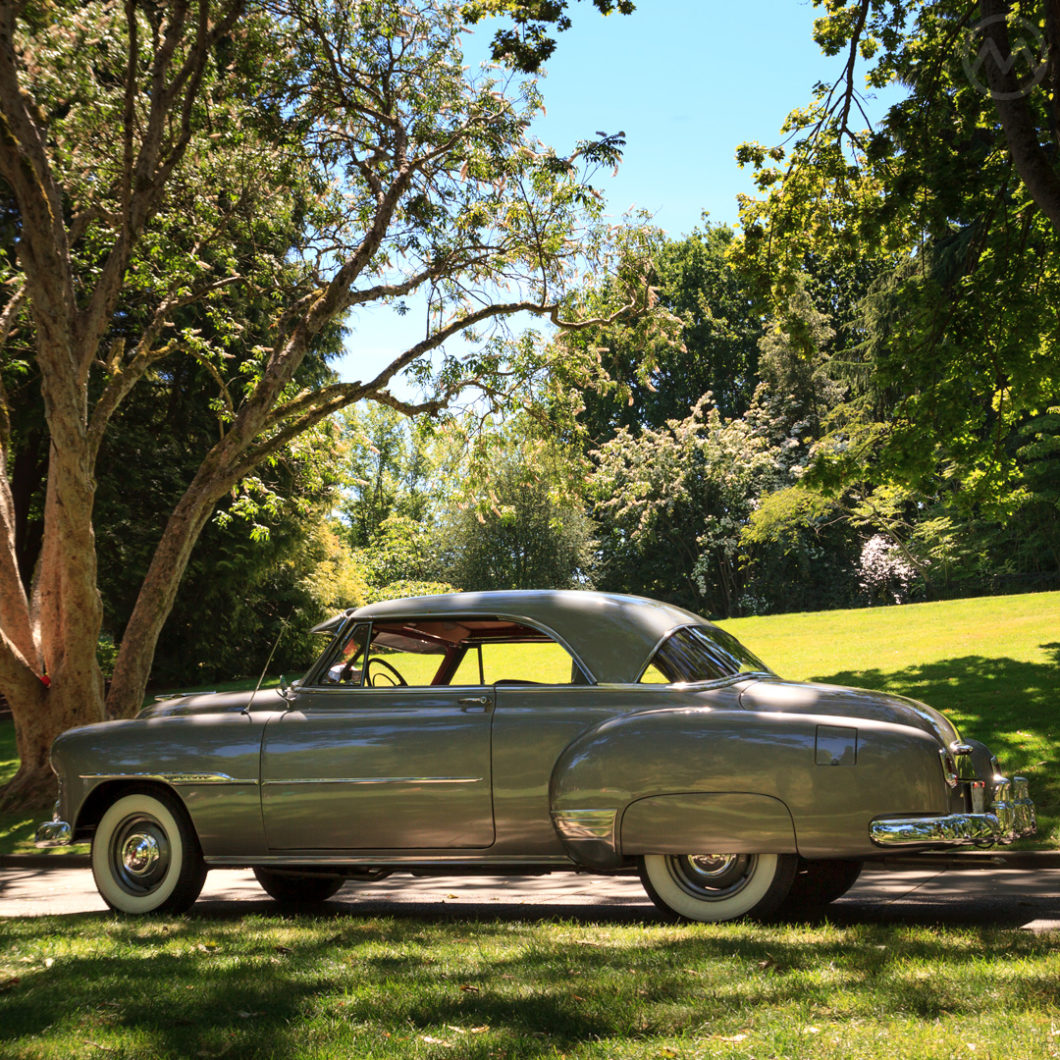Maybe, looking at this car, you can hear Dinah Shore’s voice – “See the U.S.A., in your Chevrolet, America is asking you to call…” But the wonderful Dinah wasn’t the first person to sing that song, even if it became world-famous as a result of her voice and her Television shows.
Before the Dinah Shore Chevy show, there was “Inside U.S.A. with Chevrolet,” which ran from September 1949 to March of 1950 – the song was sung by Broadway performers Mary Healy and Peter Lind Hayes, who hosted the show. The show was a TV version of a Broadway show, the conceit of which was that each act (and each episode of the show) focused on music themed after an individual U.S. State.
Like most early TV, it was pretty much Vaudeville in your living room. Guest stars like Lucille Ball and good writing from people like Moss Hart helped, but supposedly the Broadway success didn’t translate to TV. But the roots went back further than Broadway.
Inside U.S.A.
The musical was born of a much more serious book – 1947’s “Inside U.S.A.,” by John Gunther. Gunther’s popular “Inside” series had already tackled Europe (1936), Asia (1939), and Latin America (1941) and Americans couldn’t get enough of these books – so his next volume was about the 48 states (Hawaii and Alaska were still more than a decade away from statehood when he did his 13-month road trip).
Though generally a feel-good piece about local culture he encountered, it was unvarnished – containing plaudits for well-governed places and stinging, opinionated criticisms of places that weren’t.
Those things were largely forgotten on Broadway and “sanitized” TV, but the concept of a show that focused on moving from state to state was a perfect venue for promoting cars, and Chevrolet jumped on it early.
The actual song was written by Leo Corday and Leon Carr. Carr would go on to write pop hits and many jingles (including “Sometimes you feel like a Nut …”). The original “Inside U.S.A” didn’t last long, but the song found real fame when Chevrolet sponsored Dinah Shore’s first TV program. It became a signature tune for Dinah, even though it was an ad jingle.
The Cars
The cars Chevy was promoting then were new for 1949 and they got only light changes into 1952. The first new postwar Chevrolets, the names changed from “Stylemaster” and “Fleetmaster” to “Special” and “Deluxe,” and though all new, they continued to use the old Chevy straight six, either with 216-cid or 235-cid if coupled to the power-sapping but very convenient Powerglide.
The stand-out star of these cars debuted in 1950 – the Bel Air hardtop. It was the first use of the Bel Air name and was an option rather than a model as it later became. Hardtops were the latest craze and they looked like convertibles (the cars everyone wanted to have on a nice day but didn’t want to live with year-round). GM was on the vanguard of offering them in low-priced cars.
The Bel Air was $300 more expensive than a 2-door sedan (enough to buy a used car at that time), only the wagon and convertible were pricier, but it sold very well. These Chevrolets lasted into 1954 with a major update for the ’53-’54 years, and the Bel Air name was extended to pillared sedans and coupes and the Convertible.
It was Chevy’s top trim into 1957, only to be eclipsed by the Impala in 1958. From then on, it was gradually de-contented until finally being dropped in the U.S. after 1975. The Bel Air trim carried on in Canada into 1981 as the base-model big Chevy.
The Players
Gunther released five more “Inside” books, about Africa, Soviet Russia, a revisit to a divided Europe in 1961, then South America again and Australia and New Zealand. He also wrote several novels and other non-fiction books including a volume about his teenage son’s struggle with, and death from, Cancer – “Death be not proud.” In 1959 and 1960, he narrated a more serious TV show version of his travelogues.
Healy and Lind Hayes, both friends of Shore who had appeared on her radio programs in the 1940s, kept working on Broadway and eventually broadcast radio shows from their home, then became regular performers in Las Vegas, headlining at the Sands, in the 1960s and 1970s.

